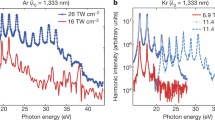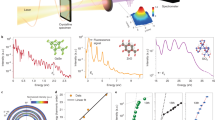Abstract
The present paper calculates the frequency shifts of laser modes which are brought about by the nonlinear response of the active laser material. The active material is supposed to consist of a set of N atoms each with three or four levels either at random lattice sites or moving with a Gaussian velocity distribution. The formalism developed in our previous work in which a homogeneously broadened line was considered is now applied to a line which is in addition inhomogeneously broadened. The physically most important case of an inhomogeneous Gaussian is treated in detail up to orderγ/α, whereγ is the natural linewidth and α that of the superimposed inhomogeneous broadening. Starting from first principles our present microscopic theory represents especially a foundation of Bennetts concept of hole burning effects. Furthermore it contains the effects of time-dependent nonlinearities as well as that of polarization. Besides the well known mode pulling effect of an inhomogeneous Gaussian several new effects show up. If only one mode lasers an additional repulsive term occurs in both solid state and gaseous systems, which stems from the time independent response of the atomic system. It is small in the solid state case but can be pronounced in the gas laser if the mode frequency is close to the center of the broadened line. If two modes oscillate simultaneously, the mode interaction leads to a repulsive term which can be appreciable both for solid state and gaseous lasers. The results for a solid state laser are in qualitative agreement with line pushing as observed bySnitzer. For comparison with gas laser experiments the He-Ne-Laser is considered in detail. If wide angle scattering of Ne-atoms is slow, the frequency pushing is governed by the time independent response. Our theoretical results are in favorable agreement with various experimental findings byBennett.
Finally, the stability of simultaneous laser modes is treated in detail both for the solid state and gaseous case.
Similar content being viewed by others
Author information
Authors and Affiliations
Rights and permissions
About this article
Cite this article
Haken, H., Sauermann, H. Frequency shifts of laser modes in solid state and gaseous systems. Z. Physik 176, 47–62 (1963). https://doi.org/10.1007/BF01375622
Received:
Issue Date:
DOI: https://doi.org/10.1007/BF01375622




